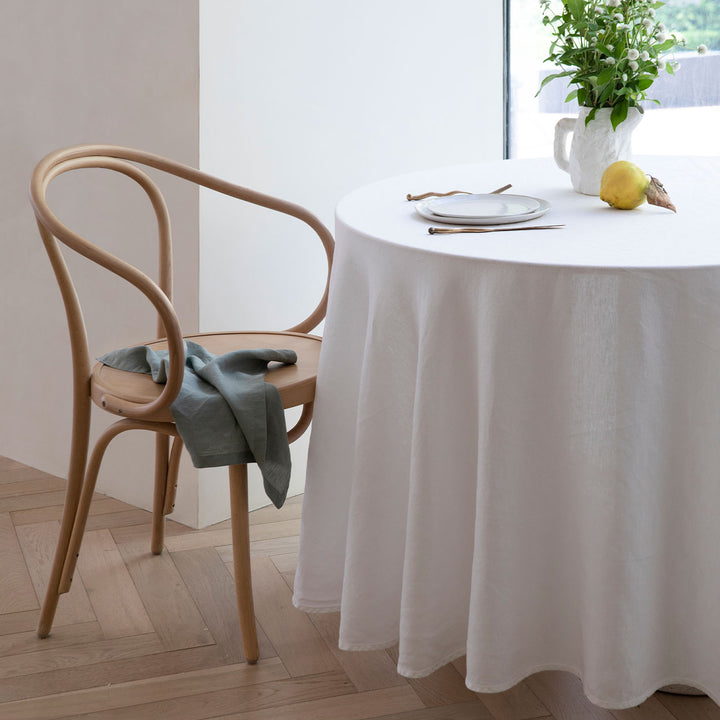Bed Linen Textile: Recognizing the Origins, Qualities, and Benefits of This Luxurious Natural Product
Linen, the refined and sophisticated textile understood for its extravagant feeling and classic appeal, has a rich background that dates back centuries. Past its historical relevance, bed linen possesses unique features that set it apart from various other fabrics, making it a prominent selection in the globe of style and indoor layout.
Historic Roots of Bed Linen
Linen, a fabric with old origins, has played a substantial duty throughout background due to its amazing properties and versatility. Dating back to old people, bed linen has been a prized fabric for its phenomenal breathability, longevity, and extravagant feeling.
In middle ages times, linen continued to be very respected, with its production coming to be a considerable industry in Europe. The versatility of bed linen made it a staple material for clothing, household things, and even cruises for ships. During the Renaissance, bed linen was additional raised in condition, with its use in great garments and home bed linens representing wealth and social standing.
Distinct Attributes of Linen
Popular for its outstanding breathability and sturdiness, linen textile flaunts distinctive attributes that have made it a favored textile for centuries. One of the vital functions of bed linen is its unequaled breathability, which allows air to stream through the material conveniently. This property makes linen garments perfect for warm weather, as they assist the body stay great and comfortable. Additionally, bed linen is known for its high absorbency, capable of wicking away moisture from the skin, making it ideal for summer garments.
Linen fabric additionally comes to be softer and much more comfortable with each clean, boosting its charm over time. Its capability to resist dust and spots, along with its hypoallergenic homes, better add to the attraction of bed linen as a premium fabric selection.
Advantages of Using Bed Linen
With its extraordinary breathability and resilience, bed linen material offers a multitude of advantages that make it a preferred option for various clothing and household things. One of the primary benefits of making use of linen is its breathability. Bed linen fibers are hollow and permit better airflow, keeping the body cool and comfortable in hot climate. Additionally, bed linen is very absorbent, with the ability of soaking up moisture without really feeling damp, making it ideal for summertime garments.
Moreover, linen is a sturdy textile that comes to be softer and extra comfy with each clean, making sure durability and lowering the demand for constant replacements. This resilience additionally encompasses its resistance to moths and carpet beetles, making bed linen items much less prone to harm compared to other materials.
Furthermore, linen is a sustainable selection, as it browse this site is made from the flax plant, which requires much less water and pesticides to grow compared to cotton. Its all-natural fibers are additionally biodegradable, adding to ecologically pleasant techniques. Finally, the advantages of making use of bed linen incorporate comfort, toughness, resistance, and sustainability to insects, making it a eye-catching and functional choice for various More hints applications.
Versatile Applications of Linen

Linen drapes bring a touch of underrated luxury to living spaces, enabling natural light to filter via while adding structure and deepness to the space. Padding covers, table bed linens, and even upholstery benefit from bed linen's functional residential or commercial properties, including a touch of sophistication and comfort to any type of home setting.
Sustainability in Bed Linen Production

Moreover, linen is a naturally degradable material, making sure that at the end of its go now lifecycle, it will naturally decompose without damaging the setting. The longevity and long life of linen items likewise add to sustainability by reducing the regularity of substitutes. Additionally, bed linen's all-natural protecting homes can conserve energy by keeping people cool in heat and warm in colder environments, potentially decreasing the reliance on artificial home heating and cooling systems. Welcoming bed linen as a lasting choice in fabrics lines up with the expanding worldwide emphasis on eco mindful techniques in various sectors.
Conclusion
In conclusion, bed linen textile has a rich historical history, distinct qualities, and various benefits. Bed linen's special properties such as breathability, resilience, and moisture-wicking capacities establish it apart from other fabrics, making it a glamorous and practical choice for apparel, home fabrics, and other items.
During the Renaissance, bed linen was more elevated in standing, with its use in fine garments and household linens signifying riches and social standing. (flat sheet)
Distinguished for its outstanding breathability and sturdiness, bed linen material boasts distinct qualities that have actually made it a preferred fabric for centuries.With its extraordinary breathability and durability, bed linen textile uses a wide range of advantages that make it a prominent selection for various garments and household products. Padding covers, table linens, and even furniture benefit from linen's functional properties, adding a touch of refinement and comfort to any type of home setting.
Bed linen's unique buildings such as breathability, resilience, and moisture-wicking capacities set it apart from other materials, making it a glamorous and practical selection for garments, home fabrics, and other products.